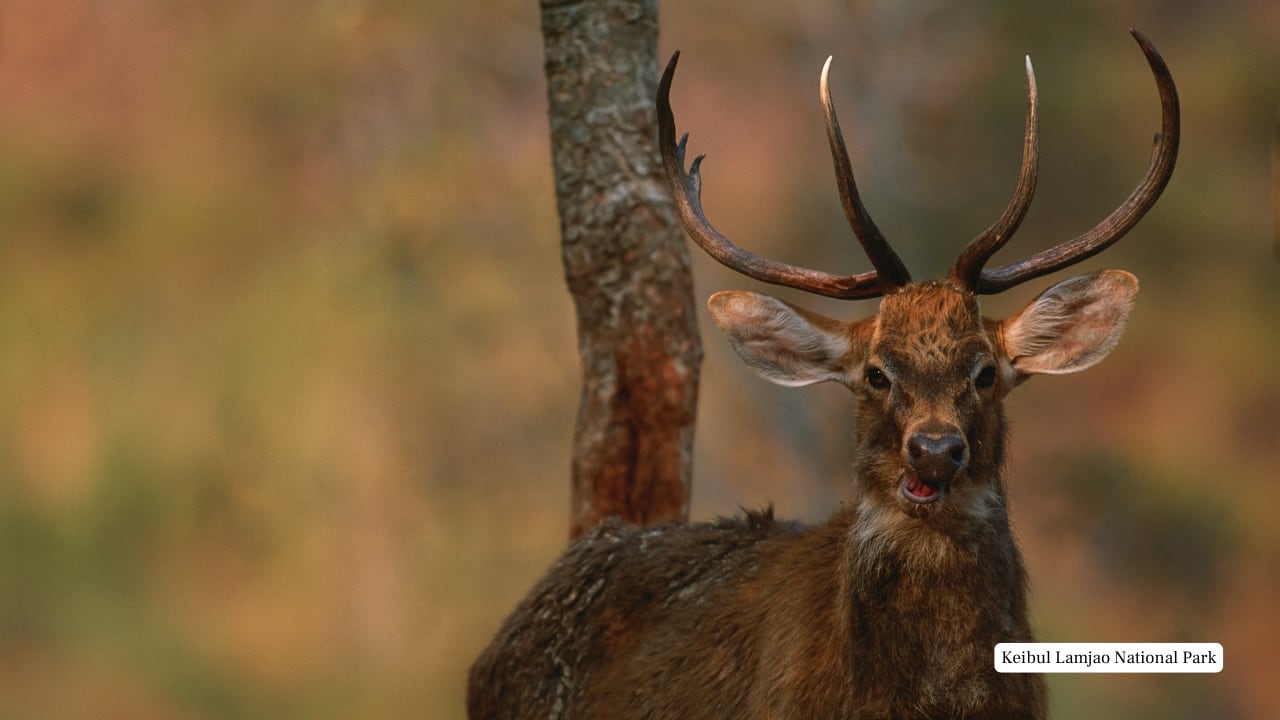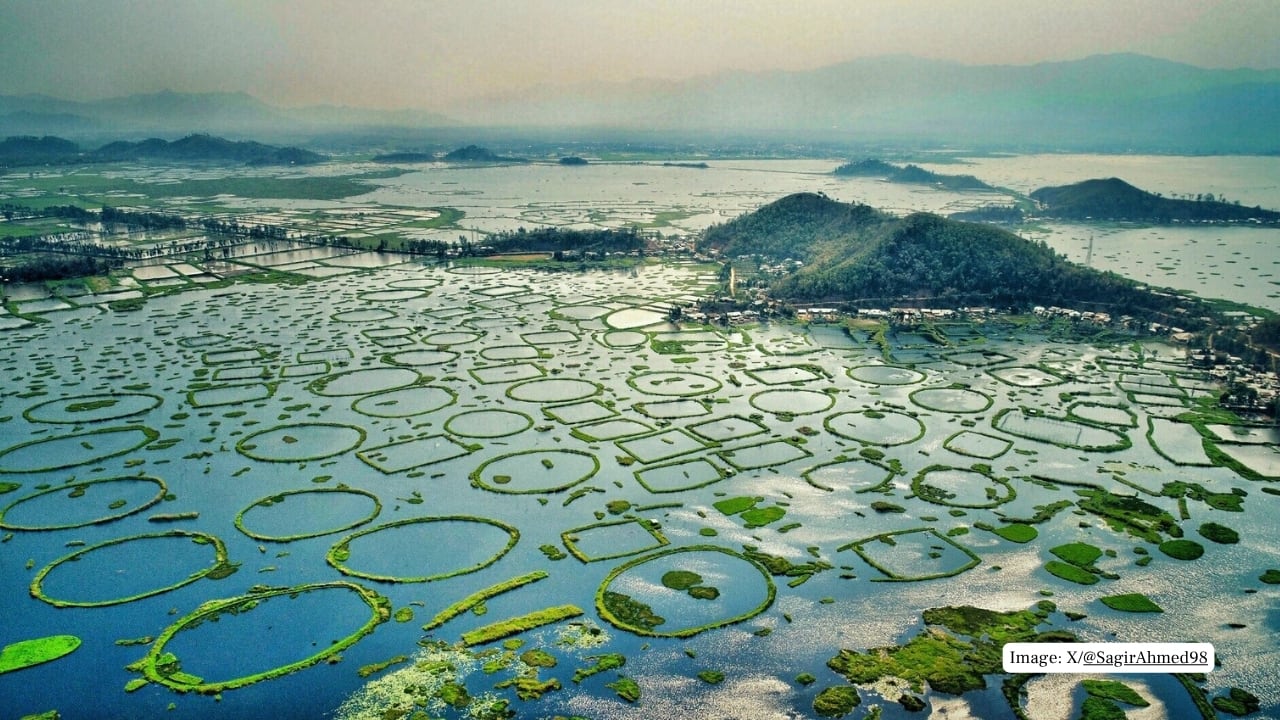



When you think of national parks, towering trees, dense forests, or open savannahs might come to mind. But tucked away in the remote hills of Manipur, there’s one that rewrites the rulebook entirely. Keibul Lamjao National Park isn’t built on solid ground—it drifts gently on the waters of Loktak Lake.
Yes, you read that right—a national park that floats. Suspended on thick mats of vegetation known as phumdis, this park is the only one of its kind anywhere in the world. It’s a surreal landscape where land sways, deer tiptoe across floating meadows, and nature blurs the line between earth and water.
What Makes Keibul Lamjao Float?
Keibul Lamjao floats on a fascinating natural phenomenon called phumdis—thick, buoyant mats made from layers of organic material, soil, and vegetation that drift on Loktak Lake’s surface. These formations rise and fall with the water level and are strong enough to support large mammals like deer. Some are even used by local communities for fishing and building small huts.
This intricate ecosystem spans about 40 square kilometres and forms part of the larger Loktak Lake system, which is itself a Ramsar Wetland of International Importance. In an era where climate adaptation is becoming a priority, Keibul Lamjao offers a rare, real-world example of nature’s ingenuity.
The Sangai: A Story of Survival
The park’s flagship species is the Sangai deer—a creature so unique, so regionally cherished, it’s considered the state animal of Manipur. With its delicate, tiptoe-like movements across the floating phumdis, the Sangai has earned the nickname "Dancing Deer." Its antlers curve elegantly, and its presence is almost mythical.
 Keibul Lamjao National Park (Image: Canva)
Keibul Lamjao National Park (Image: Canva)
Once believed to be extinct in the 1950s, just a few Sangai were rediscovered by conservationists in the marshes of Loktak Lake. This rediscovery led to Keibul Lamjao being declared a wildlife sanctuary in 1966, and later a national park in 1977, specifically to protect the last natural habitat of this elegant deer.
As of recent estimates, the population of Sangai stands at around 260 individuals, but their future still hangs delicately on the health of the phumdi ecosystem—making ongoing conservation efforts essential.
Wildlife Beyond the Sangai
Keibul Lamjao isn’t a one-species wonder. The park hosts a diverse array of flora and fauna, especially adapted to its marshy and aquatic environment.
Expect to see:
Things to Do at Keibul Lamjao and Beyond
1. Take a guided boat safari through Loktak Lake and around the floating park. These tours offer an intimate view of the lake’s ecosystem and the chance to spot a Sangai in the wild.
2. Visit Sendra Island—a scenic hillock in the middle of Loktak Lake offering panoramic views of the floating phumdis. The Sendra Tourist Home is a great place to stop for a local meal and lakeside photographs.
3. Explore Moirang—home to the historic INA (Indian National Army) Memorial Complex, where the Indian tricolour was first hoisted on Indian soil in 1944 under the command of Subhas Chandra Bose.
4. Visit the Loktak Folklore Museum in Thanga to understand the cultural and ecological significance of the lake for the Meitei people of Manipur.
5. Take a nature trail to Pabot Hill inside the national park, especially during the drier months when walking paths become accessible.
Best Time to Visit Keibul Lamjao National Park
 Where deer tiptoe across floating meadows—discover the surreal beauty of India’s Keibul Lamjao, the world’s only floating national park. Image: X/@SagirAhmed98
Where deer tiptoe across floating meadows—discover the surreal beauty of India’s Keibul Lamjao, the world’s only floating national park. Image: X/@SagirAhmed98
How to Reach Keibul Lamjao
By Air: The closest airport is Imphal International Airport, around 50–55 km away, with regular flights from Delhi, Kolkata, and Guwahati.
By Road: Keibul Lamjao is about a 1.5 to 2-hour drive from Imphal via Moirang. Taxis and shared jeeps are readily available.
By Train: Manipur does not yet have a major railway network. The nearest station is Dimapur in Nagaland (approx. 215 km away), followed by a long road journey.
Travel Tips
In a country full of iconic monuments and celebrated wildlife parks, Keibul Lamjao remains one of India’s most astonishing—and overlooked—natural marvels. It’s a place where land floats, deer dance, and ecosystems thrive in constant motion. It’s also a case study in how traditional communities, biodiversity, and conservation can coexist in harmony.
So, if you’ve been searching for a travel story no one else has told, a place that feels like a secret whispered by the Earth itself—Keibul Lamjao is that story.
Discover the latest Business News, Sensex, and Nifty updates. Obtain Personal Finance insights, tax queries, and expert opinions on Moneycontrol or download the Moneycontrol App to stay updated!
Find the best of Al News in one place, specially curated for you every weekend.
Stay on top of the latest tech trends and biggest startup news.